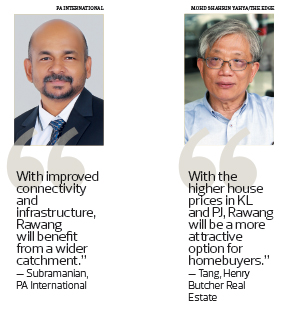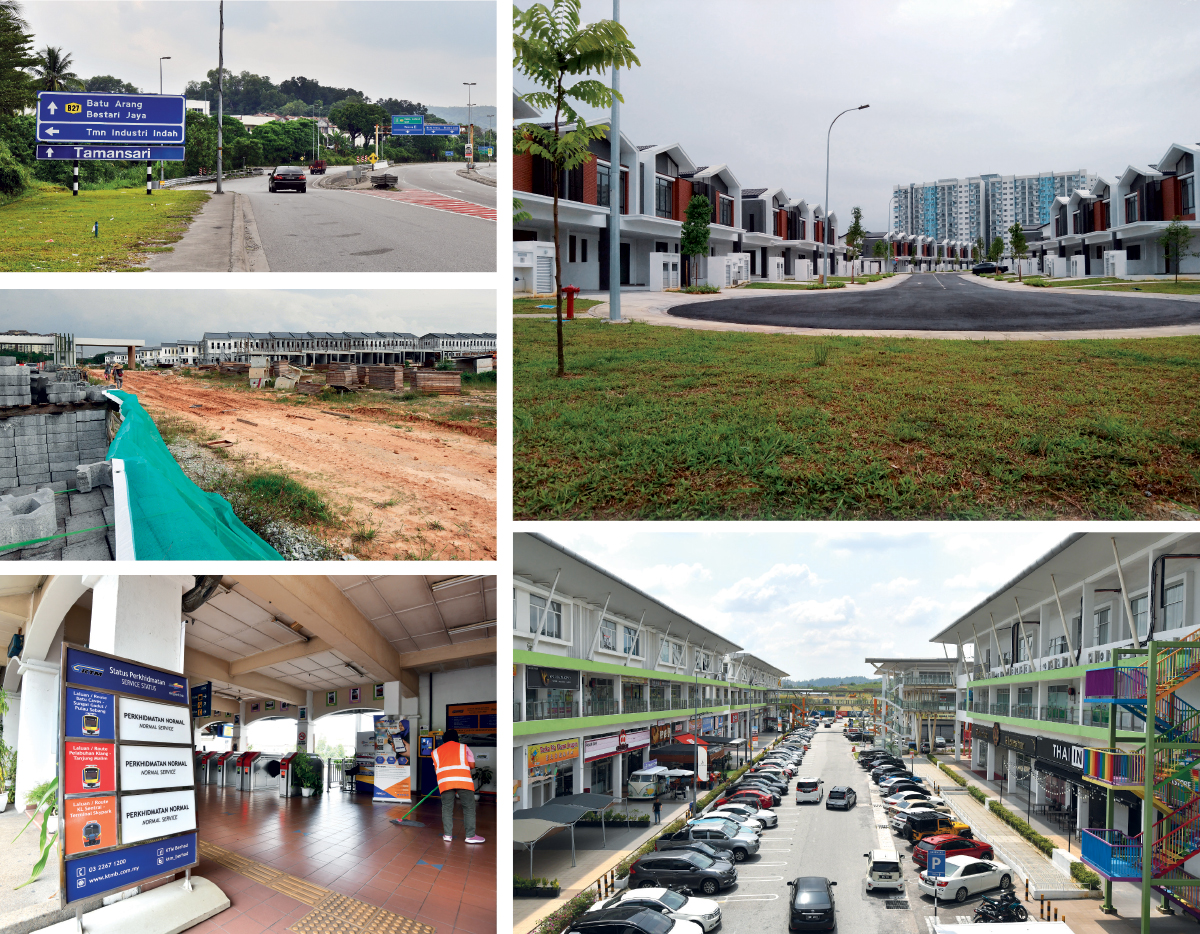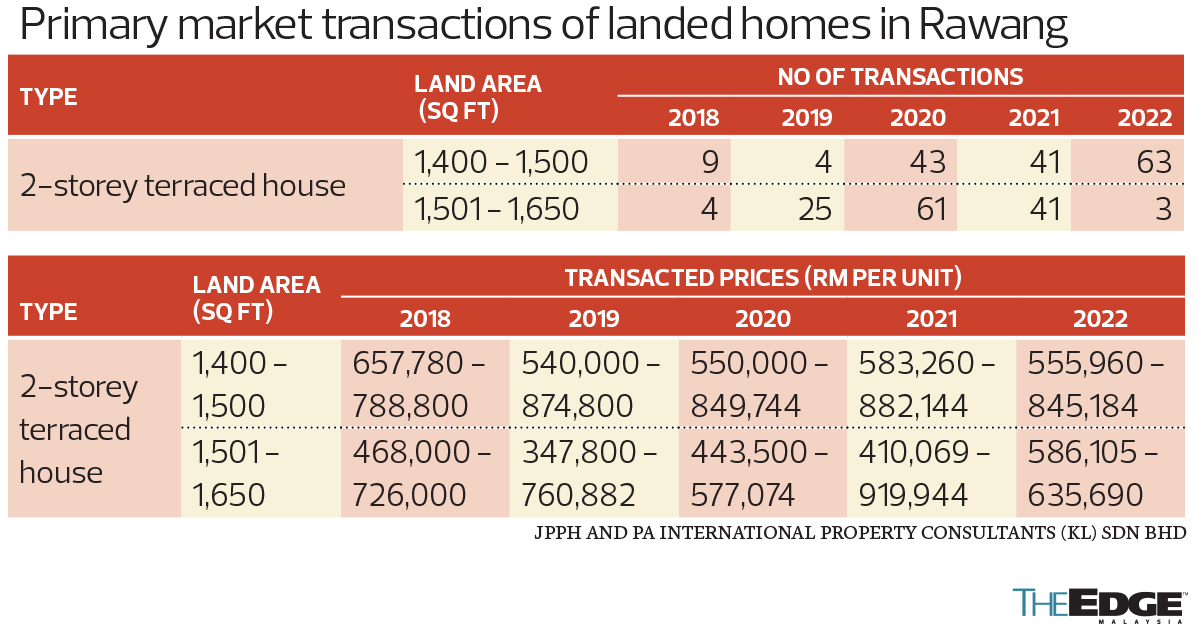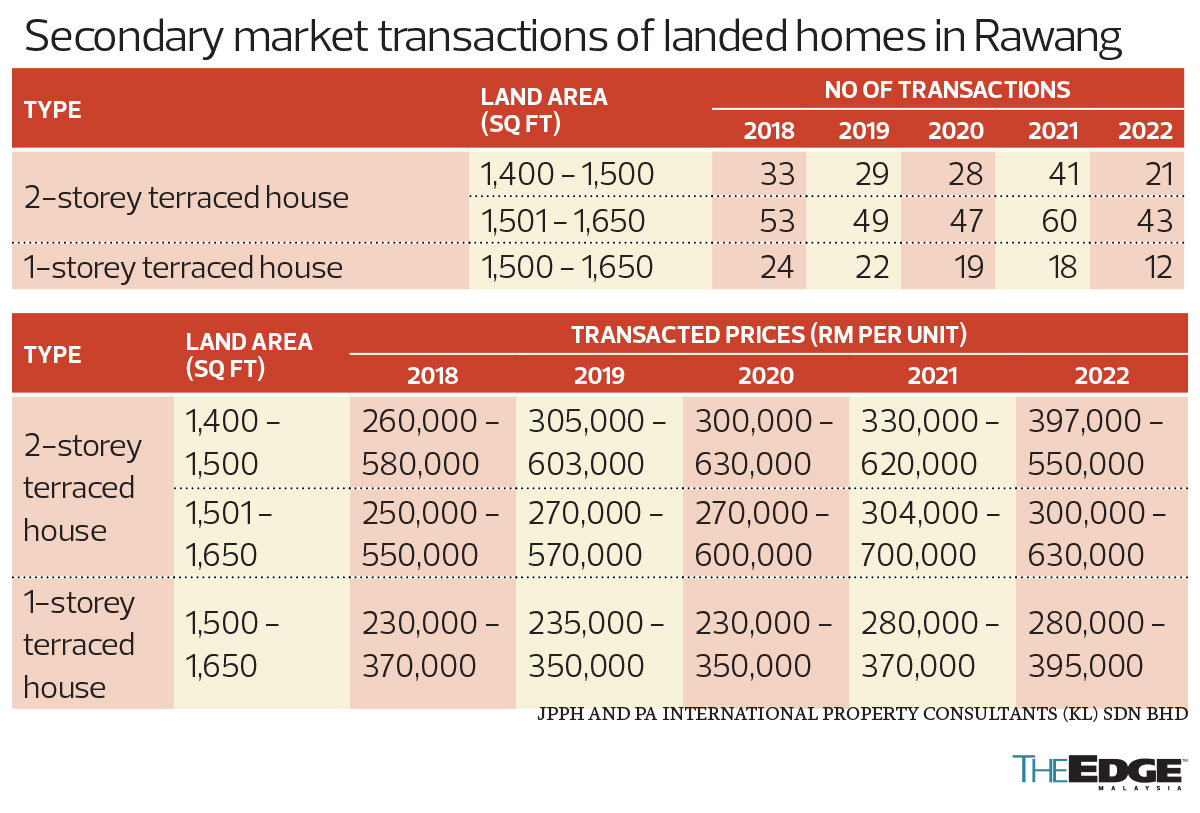
This article first appeared in City & Country, The Edge Malaysia Weekly on July 24, 2023 - July 30, 2023
Rawang, located to the northwest of Kuala Lumpur, was one of the earliest towns to be established in the country. Back in the day, it was a tin mining centre. And when the tin mining industry began to wane, the townsfolk turned to agriculture, converting many tracts of land into rubber and oil palm estates.
The town has undergone rapid development over the years, with a number of townships and industrial estates sprouting up. One of the earliest property developers there was Lim Tan & Sons Sdn Bhd, which developed Rawang Garden and Green Park, among others.
Other reputable developers who came in later and developed housing projects over the past few decades include Hong Bee Land Sdn Bhd, Low Yat Group, GuocoLand (Malaysia) Bhd, S P Setia Bhd, Gamuda Land and Mah Sing Group Bhd.
According to data provided by Selayang Municipal Council (MPS), the population of Mukim Rawang had increased dramatically from 199,095 in 2000 to 299,095 in 2020, or a 50% increase over two decades, accounting for about 29.5% of the total population of the areas under the MPS’ administration. The population growth explains the steady demand for housing over the years.
“The preferred type of properties in Rawang is still landed, particularly terraced houses that cater for all income groups, especially the middle-income group. The majority of them are homeowners,” PA International Property Consultants Sdn Bhd group managing director Subramanian Arumugam tells City & Country in an email interview.
He points out that the improved connectivity to Rawang has stirred interest among potential homebuyers as the town is now easily accessible from Sungai Buloh, Petaling Jaya and Kuala Lumpur city centre via the KL-Rawang Highway or Rawang Bypass, KL-Kuala Selangor Expressway, Guthrie Corridor Expressway and North-South Expressway.
Rawang offers plenty of landed properties at affordable prices compared to places like Petaling Jaya and Shah Alam, giving buyers the option of owning a landed property at a lower price point.
According to data provided by PA International, most of the terraced houses on the secondary market in Rawang are located in older housing schemes such as Kota Emerald and Bandar Tasik Puteri, where the land area ranges from 1,400 to 1,650 sq ft.
“Both the number of transactions and transacted prices of 2-storey terraced houses [in Rawang] with a typical land area of 1,400 to 1,650 sq ft have remained stable for the past five years,” says Subramanian.
“However, the number of transactions was slightly higher in 2021, most likely due to the movement restrictions during the pandemic [which led to greater demand for landed property]. The transacted prices were in the range of RM304,000 to RM700,000 per unit.”
Meanwhile, the number of transactions seen by 1-storey terraced houses, with a typical land area of 1,500 to 1,650 sq ft, has decreased over the past five years. Nevertheless, the transaction values remained stable at RM280,000 to RM395,000 per unit.
Subramanian observes that in the primary residential property market, the volume of transactions was in the double digits (29 transactions) in 2019 and reached a peak (104 transactions) in 2020 during the Movement Control Order period. “The selling prices are generally between RM540,000 and RM650,000 regardless of the land area, with the exception of Gamuda Gardens, which were sold above RM700,000 in 2018 and above RM800,000 in 2019,” he says.
Developed by Gamuda Land, the 810-acre Gamuda Gardens is an ongoing township development to the south of Rawang town centre, bordering Kundang and Kuang in Selangor.
“All in all, the latest transaction values and current asking prices [in Rawang] have remained stable at RM420,000 to RM600,000 for [new] 2-storey terraced houses with a typical land area of between 1,300 and 1,540 sq ft. It is observed that 2-storey terraced houses are the most popular type of property in Rawang,” says Subramanian.
Traffic conditions
While the improvements in connectivity, infrastructure, amenities and housing affordability has turned Rawang into one of the most robust residential property markets in the Klang Valley, the traffic congestion in the town centre remains an issue, says Henry Butcher Real Estate Sdn Bhd chief operating officer Tang Chee Meng.
“There are many new townships [in Rawang] that are well planned, with pleasant landscaping and modern house designs, [which have helped to] attract more people to Rawang,” he observes.
“[However,] some of the challenges that Rawang faces are traffic congestion in the old town area as well as along some roads that lead to new townships after exiting the highways. So far, there have been no announcements of the MRT line being extended to Rawang, so public transport is not as good as in areas where LRT or MRT lines have been built.”
Tang says Rawang has great potential for future growth as it is well connected by highways, which makes travelling to and from KL and PJ more convenient and faster, though the cost of tolls may deter those in the B40 and M40 groups who do not work in or near Rawang, as well as those who need to commute daily for work.
“But the trend of companies adopting a hybrid system of working from home/working in the office will reduce the need to travel to work, which indirectly helps to cut down on travel expenses and make living further away from the office a more viable option,” he notes.
Tang points out that the lower prices of the houses in Rawang are a strong attraction for people who want a landed property in a nice environment but cannot afford the more expensive houses in KL or PJ.
“Land for developing townships nearer to the city is becoming scarce. Land costs have become much higher. As such, satellite towns like Rawang will become an attractive option for house buyers just like PJ and Subang in the past,” he says.
Ideal for owner-occupiers
In Tang’s opinion, Rawang is more suitable for those looking to live there than for investment as the rental yields are not that attractive.
“However, the potential for capital appreciation over the long term is there as the escalating land costs and property prices will result in homebuyers looking at places further away from the city. And Rawang, with its accessibility via highways and the availability of amenities, will make a sound choice,” he says.
Tang expects property prices in Rawang to appreciate in the medium to long term, thanks to some new townships with modern design concepts, better landscaping and amenities master planned by reputable developers, which have successfully attracted more homebuyers from the Klang Valley and other states.
“With the higher house prices in KL and PJ, Rawang will be a more attractive option for homebuyers. The increase in demand will lead to a natural appreciation of house prices, although it is our view that the price increases will be at a more gradual pace,” he says.
On the future of Rawang, Tang expects it to be even more self-sufficient not only in terms of essential services and amenities, but also employment opportunities generated by the growth of industrial activities in the town.
PA International’s Subramanian concurs with Tang. He says Rawang is expected to be one of the hotspots given the affordability of the homes and the fact that landed properties will continue to be sought after by homebuyers.
While the traffic congestion in Rawang has been an obstacle to the growth of its property market, road conditions are expected to improve when the upgrading work for the road connecting Rawang to the North-South Expressway is completed in 2026, says Subramanian.
“With improved connectivity and infrastructure, the town will benefit from a wider catchment … Some companies have continued to adopt a hybrid system of work from home/work in the office, so Rawang will benefit in terms of property demand due to the affordability of the properties and excellent connectivity,” he adds.
Save by subscribing to us for your print and/or digital copy.
P/S: The Edge is also available on Apple's App Store and Android's Google Play.




